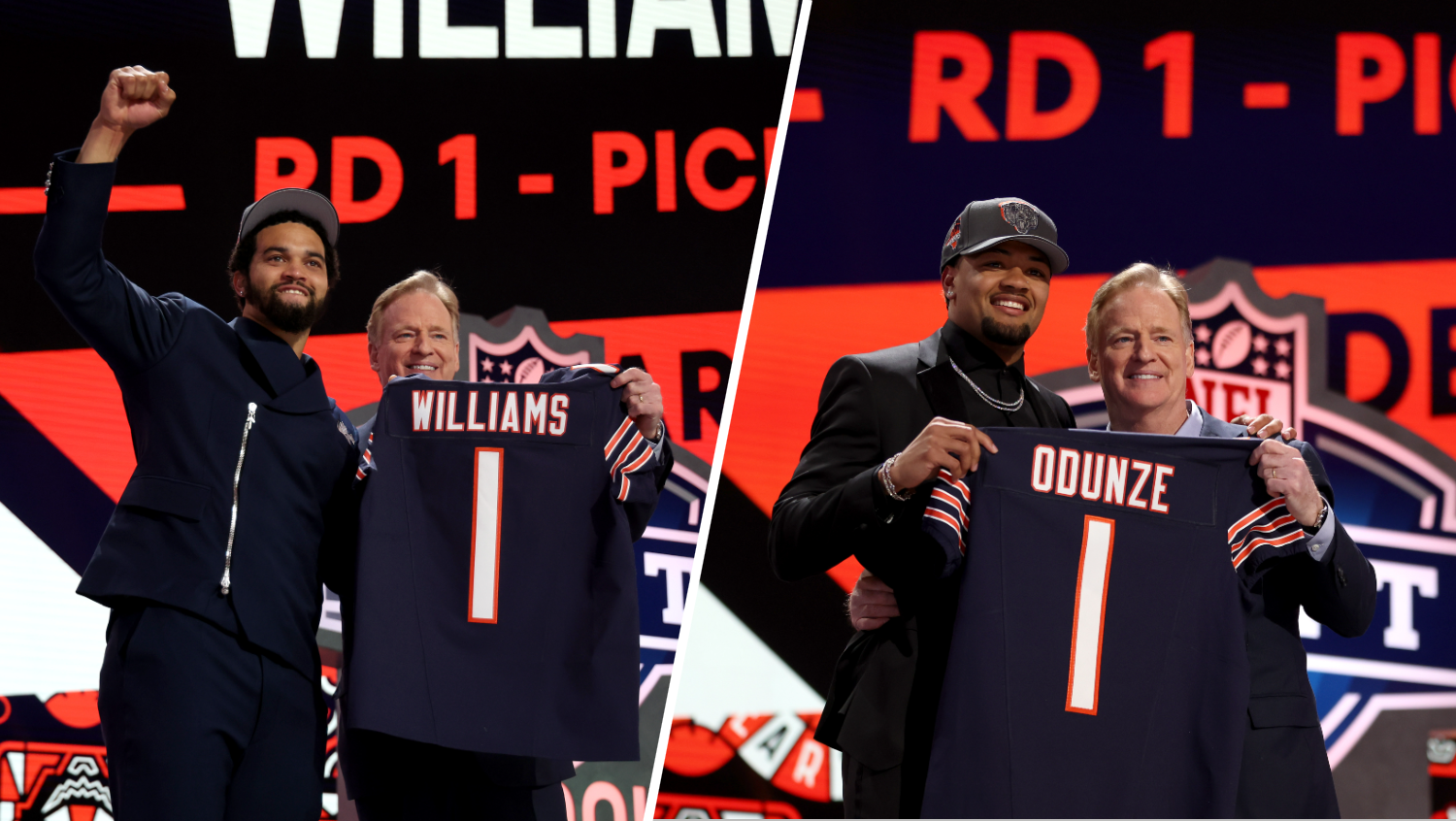The window for teams to place the franchise tag on players set to hit the free agent market opened this week, and with it came speculation of which players would receive the dreaded distinction. For the Bears, Jaylon Johnson seems like a prime candidate for the tag.
But if you don’t like digging in the weeds of NFL bylaws you might not know what the franchise tag is, and why players typically don’t like it. We’re here to help.
WHAT IS THE FRANCHISE TAG?
Technically, there are three types of tenders that teams can use as a tag, but one is used far more often than the others. Those tenders are:
Feeling out of the loop? We'll catch you up on the Chicago news you need to know. Sign up for the weekly Chicago Catch-Up newsletter here.
-Non-exclusive franchise tag
-Exclusive franchise tag
-Transition tag
The non-exclusive franchise tag is the most common option, and is almost always what people are talking about when they say “franchise tag.” Under this tender, a player earns the average of the top-five salaries at his position over the last five years, or 120% of his previous salary, whichever is greater. A player who has been tagged with this tender is free to negotiate with other teams for a contract extension, and if he agrees to terms with another team, his current team has the opportunity to match. If they opt not to match, then the player’s new team must send the previous team two first-round draft picks as compensation.
Under the exclusive franchise tag, a player earns the average of the top-five salaries at his position for the current year, or 120% of his previous salary, whichever is greater. However, a player cannot negotiate with other teams.
Chicago Bears
Because of the cheaper salary and the major compensation if another team signs the player away, the non-exclusive franchise tag is the more popular option for teams.
Then there’s the transition tag, which pays a player the average of the top-10 salaries at his position. A player can negotiate for a new deal with other teams under this tender, and his current team still has the option to match any offer sheet. However, if the team decides to let the player leave for another deal, they receive no compensation in return. The Bears used the transition tag on Kyle Fuller in 2018, and Fuller eventually agreed to a four-year, $56 million deal with the Packers. The Bears didn’t let Fuller walk, however, and matched the Packers offer sheet.
HOW MUCH WOULD JAYLON JOHNSON EARN UNDER FRANCHISE TAG?
If the Bears slap the non-exclusive franchise tag on Johnson, he would earn a projected $18.8 million, fully guaranteed.
HOW LONG DO TEAMS HAVE TO DECIDE ON FRANCHISE TAGS?
The first day that teams could tag their players was Feb. 20. The last day they can tag a player is Mar. 5.
HOW MANY PLAYERS CAN A TEAM FRANCHISE TAG?
NFL teams can only use one tag per year. They have to decide whether to use a franchise tag or a transition tag. They cannot use both.
WHAT HAPPENS AFTER A PLAYER IS FRANCHISE TAGGED?
If a team tags a player, they still have several months to try to work out a long-term deal. If not, then the player must either sign the tender and play on the one-year deal, or hold out.
WHY DON'T PLAYERS LIKE THE FRANCHISE TAG?
Players are human, and like all humans, they want to know their future is secure. While the franchise tag pays out a hefty sum, it's only a one-year deal. Players who take the field on the tag risk significant injury that could negatively impact their ability to negotiate future deals. NFL players have limited opportunities to set up their families with generational wealth. The franchise tag essentially kicks a prime opportunity to do that down the road.



